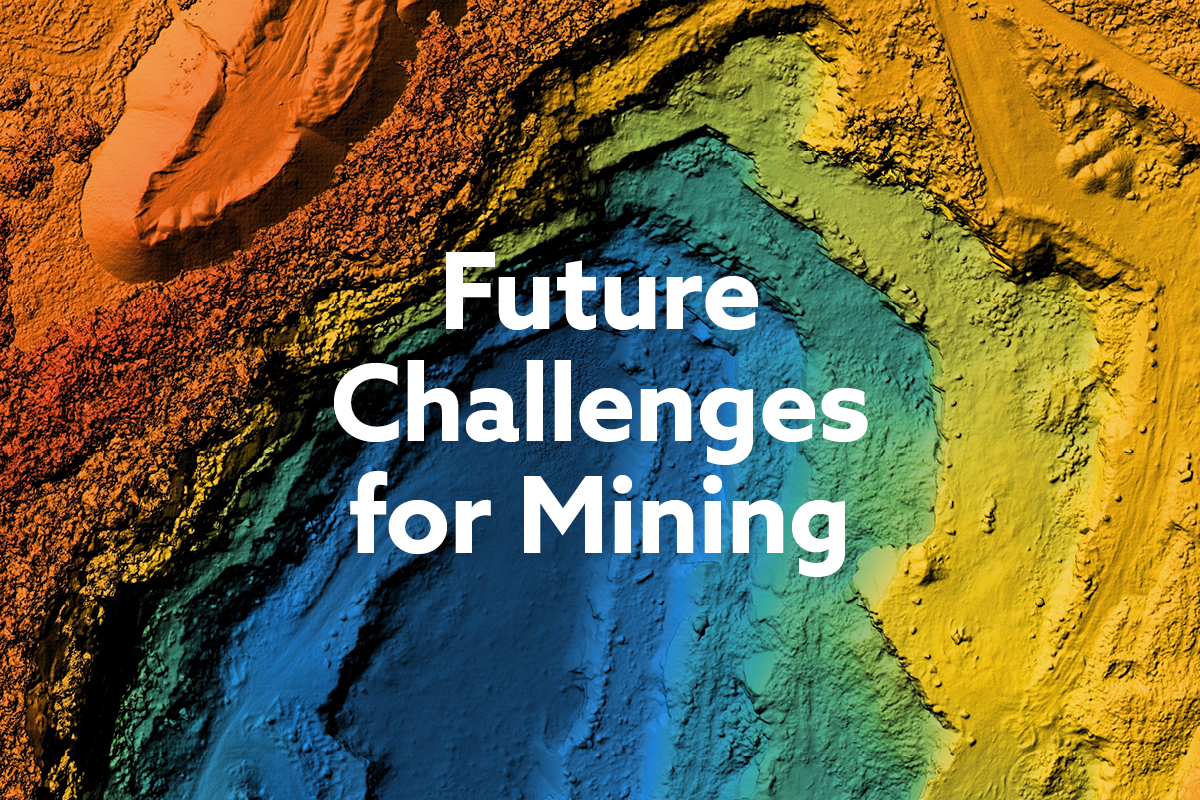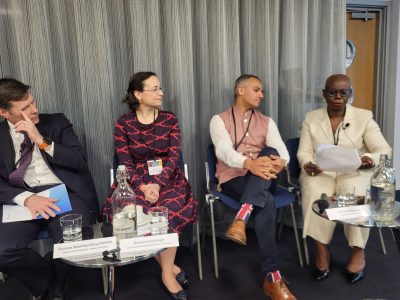On 10th July 2024, IWiM Founder and Director Barbara Dischinger was part of a distinguished panel of experts speaking at the Future Challenges for Mining seminar hosted by the Institute of Materials, Minerals & Mining in London.
The other panellists were Duncan Wanblad, Group Chief Executive of Anglo American, Rohitesh Dhawan, President & CEO of ICMM, and Tanya Chikanza, Non-executive Director at RSSB. Dr Colin Church, Chief Executive of Institute of Materials, Minerals & Mining moderated the panel. Christine Blackmore, Director and Senior Vice President of Institute of Materials, Minerals & Mining set the scene with the introduction and welcome.
Barbara shared her expertise on ‘The Diversity & Inclusion Perspective’ by answering the question: “Mining companies tell us they are increasingly struggling to recruit and retain talent. Is this at least in part because so very often, people with marginalized identities just don’t feel welcome in mining?”
Absolutely. The challenge of recruiting and retaining talent is deeply connected to how inclusive our workplaces are. However, it is a complex and nuanced issue and it would be a bit too easy to put all the onus on people with underrepresented identities, although it is very true that the sector is still grappling at making workplaces more inclusive to attract and retain people who think and look differently. We often hear of people and especially women wanting a job in mining and applying for years and sometimes not getting in, it can be very hard to get the first foot in the door especially if you don’t fit expectations.
On the one hand, the image of the sector needs to change towards a sector people trust and feel safe to let their children work in. And young people, be that boys or girls don’t wish to enter the mining industry or study mining related degrees; many universities and colleges have closed shop. Considering how many jobs Canada and Australia to name only 2 countries are seeking to fill to secure the production of metals and minerals everyone needs and increase the adoption of advanced technologies, this is an important challenge that the sector needs to focus on and collaborate on where possible. EDI efforts must continue and evolve to meet the changing needs and demographics of the workforce. No one will crack this alone.
On the other hand, although a lot of progress has been made on attraction, companies are not yet successful at retention to the same level. We hear of people who are not successful in being promoted over and over again and others who stick it out as long as they can but end up leaving. Unfortunately, many don’t just leave their company, they leave the sector, taking their important and needed skills for the mining industry with them. It is very expensive to replace them so investment in retention is key.
More work is required overall before we can say that it is an industry where everyone feels that they belong. It requires a holistic and strategic reset of the workplace, a retrofit is no longer enough. When people feel they can perform, be themselves and that they belong they will stay and be your biggest ambassadors and bring more people to join you.
Intersectionality is quite a new concept for many, the recognition that individuals hold multiple identities that intersect and influence their experiences and opportunities and makes each person truly unique. Unless you don’t know a person very well don’t make assumptions as not everything is visible. I identify as a Caucasian woman over 50, who identifies as Brazilian and as a neurodivergent person. Recognising these intersecting identities helps us create a more inclusive and supportive environment.
If I say the word “metallurgy” you will most likely look at it in a factual way; especially talking top a mining audience and may even be met with excitement. Instead, if I say words like diversity, equity, equality, inclusion, parity, affirmative action, racism, intersectionality etc. it tends to bring out emotions, feelings, past experience and bias in all of us. Different definitions exist for these terms making it harder for everyone to clearly understand them, align and work together towards achieving similar goals which makes it harder. It doesn’t make it matter less though. Consulting underrepresented people and measuring where possible, allows you to use data-driven approaches to pinpoint where intersecting identities face the most significant barriers and tailor interventions accordingly.
Many more women work in mining now than 5 or 10 years ago and that in itself is progress. However, the workplaces haven’t changed to welcome them. Let me bring some scenarios into play and ask you if you would feel welcome if this were you:
- You are on a long underground mine shift, you are of any ethnicity, any socio-economic background and any sexual orientation, you are most likely a woman but you could be a man: you don’t drink all day because there won’t be toilet facilities or there are some, they are not clean and/or easily accessible during the break time available. This can lead to frequent urinary tract infections; or you carry your soiled period products with you all day because there is no sanitary bin in the toilet; or your feet are full of blisters because there are no boots in your size and you try not to trip and create safety hazards. Less common, yes, however we need to learn that some men menstruate.
- If you require wheelchair access is there one or provisions for those who are partially sighted? If not why not, can only those considered “normal” people work in mining? And what is “normal”?
- You are a practising Muslim professional of any gender and any age working at a mine site and want to pray during your shift and require access to ablution facilities and/or you can’t eat the pork dish in the canteen which may be the only food option available on that given day.
How would you feel?
It is possible to recruit and retain talent. It requires a holistic approach signed off from the top with a budget and a team to focus on it across all aspects of the company – daily. Companies have the responsibility of creating the right environments for people to join and strive. It is companies who need to remain competitive and perform in this current mining landscape. Intersectionality brings diversity of thought, innovation and creativity, which is an opportunity for the sector to open up to new perspectives to help solve the current challenges.
In recent years, ICMM, EITI, IRMA, TSM, Copper Mark and World Gold Council and others have made substantial commitments to enhancing diversity, equity, and inclusion within its member companies. This very positive. These efforts align with broader industry trends towards sustainability and maintaining a social license to operate.
Our recommendations to you would be to recognise multiple identities, design and provide inclusive workplaces, address systemic inequities, ensure under-represented voices participate in consultations and decision-making processes and promote inclusive policies and practices. This won’t work without leadership commitment and resource allocation.

I leave you with an action. What can you do? You may not alone solve all the sectors issues but you still individually play a vital role. Creating a world that is fair for everyone is up to all of us. You can help by looking out for each other, showing one another respect, kindness and thinking about the different ways others may experience the world. Be curious, Speak up, Be open, Be an ally! We all as a collective can work towards retention in mining.

